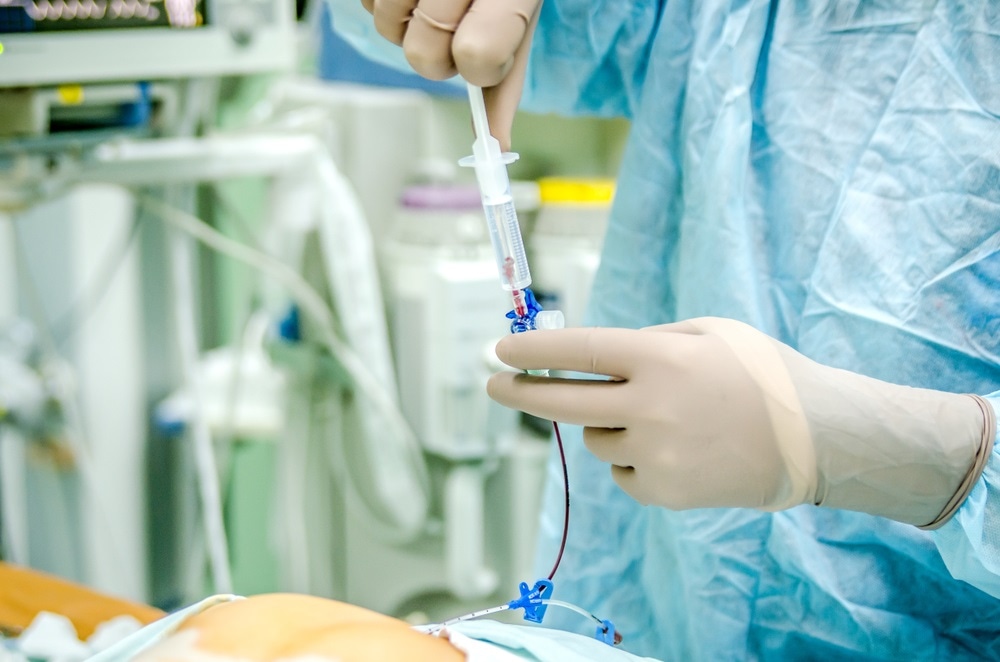In the first study of its kind, Johns Hopkins researchers provide evidence that an alternative imaging technique could someday replace current methods that require potentially harmful radiation.
The findings, published in the April issue of IEEE Transactions in Medical Imaging, detail success in a heart procedure but can potentially be applied to any procedure that uses a catheter, such as in vitro fertilization, or surgeries using the da Vinci robot, where clinicians need a clearer view of large vessels.
 Image Credits: Daria Serdtseva / Shutterstock.com
Image Credits: Daria Serdtseva / Shutterstock.com
"This is the first time anyone has shown that photoacoustic imaging can be performed in a live animal heart with anatomy and size similar to that of humans. The results are highly promising for future iterations of this technology," says Muyinatu Bell, assistant professor of electrical and computer engineering at The Johns Hopkins University, director of the Photoacoustic & Ultrasonic Systems Engineering (PULSE) Lab, and the study's senior author.
Bell's team of PULSE Lab members and cardiologist collaborators tested the technology during a cardiac intervention, a procedure in which a long, thin tube called a catheter is inserted into a vein or artery, then threaded up to the heart to diagnose and treat various heart diseases such as abnormal heartbeats. Doctors currently most commonly use a technique called fluoroscopy, a sort of x-ray movie, that can only show the shadow of where the catheter tip is and doesn't provide detailed information about depth. Additionally, Bell adds, this current visualization technology requires ionizing radiation, which can be harmful to both the patient and the doctor.
Photoacoustic imaging, simply explained, is the use of light and sound to produce images. When energy from a pulsed laser lights up an area in the body, that light is absorbed by photoabsorbers within the tissue, such as the protein that carries oxygen in blood (hemoglobin), which results in a small temperature rise. This increase in temperature creates rapid heat expansion, which generates a sound wave. The sound wave can then be received by an ultrasound probe and reconstructed into an image.
Past studies of photoacoustic imaging mostly looked at its use outside of the body, such as for dermatology procedures, and few have tried using such imaging with a laser light placed internally. Bell's team wanted to explore how photoacoustic imaging could be used to reduce radiation exposure by testing a new robotic system to automatically track the photoacoustic signal.
For this study, Bell's team first placed an optical fiber inside a catheter's hollow core, with one end of the fiber connected to a laser to transmit light; this way, the optical fiber's visualization coincided with the visualization of the catheter tip.
Bell's team then performed cardiac catherization on two pigs under anesthesia and used fluoroscopy to initially map the catheter's path on its way to the heart.
Bell's team also successfully used robotic technology to hold the ultrasound probe and maintain constant visualization the photoacoustic signal, receiving image feedback every few millimeters.
Finally, the team looked at the pig's cardiac tissue after the procedures and found no laser-related damage. While the team needs to perform more experiments to determine whether the robotic photoacoustic imaging system can be miniaturized and used to navigate more complicated pathways, as well as perform clinical trials to definitively prove safety, they say these findings are a promising step forward.
We envision that ultimately, this technology will be a complete system that serves the four-fold purpose of guiding cardiologists towards the heart, determining their precise locations within the body, confirming contact of catheter tips with heart tissue and concluding whether damaged hearts have been repaired during cardiac radiofrequency ablation procedures."
Muyinatu Bell, The Johns Hopkins University